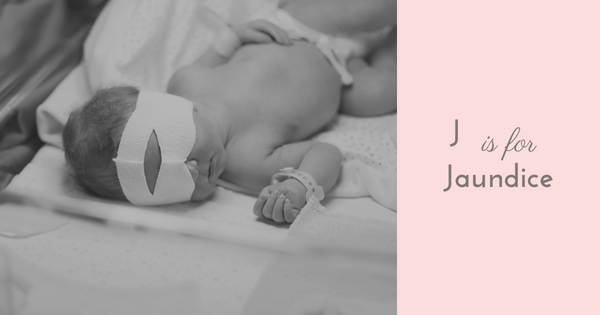Jaundice occurs when bilirubin, a metabolic product of the breakdown of red blood cells (RBCs) builds up in the blood. It manifests as a yellow tine to the skin and whites of the eyes. About 60% of newborns have some degree of jaundice as their body adjusts from having the placenta eliminate bilirubin to having their liver take on that task.
The body eliminates bilirubin through the stool. The best non-medical thing you can do to help your baby eliminate excess bilirubin is to nurse your baby. Colostrum, your “early milk,” is a natural laxative, helping to clear meconium (which contains a large amount of bilirubin). The more colostrum your baby drinks, the more quickly he is likely to eliminate the excess bilirubin.
According to the Academy of Breastfeeding Medicine, “jaundice, which occurs in the first week in association with ongoing weight loss, has been termed breastfeeding jaundice, breastfeeding-associated jaundice, breast-nonfeeding jaundice, or starvation jaundice”. This type of jaundice often associated with overall low enteral intake. Breastfeeding itself does not cause it. For this reason, your baby’s pediatrician may prescribe supplementation with formula. The goal of this is to simply increase the volume of fluid baby is taking in. Ask your pediatrician about supplementing with expressed breast milk. If your goal is to continue to breastfeed after the jaundice has been resolved, you should continue to pump every 2-3 hours, while supplementing, to maintain your supply.
What causes jaundice? When will it get better?
Jaundice can occur because a baby’s liver is adjusting to having to function on it’s own. It can also be the result of prematurity, infection, blood-type mismatch, and blood or liver problems.
As your baby continues to feed on his own and his liver develops, bilirubin passes through the body much more easily. Physiologic jaundice typically resolves within 2-3 weeks after birth. A persistence in symptoms beyond this period may indicate an underlying condition. Issues with the hepatic (liver) system cause pathologic jaundice. The doctor must identify the cause before the condition can be fully remedied.
Complications of Jaundice
Most cases of jaundice resolve within a few weeks’ time and have no lasting effect on baby. In extreme cases, if levels become too high, your baby can be at risk of brain damage, cerebral palsy, and deafness. Rest assured knowing that if your baby appears jaundiced after birth, your pediatrician will be on top of monitoring his bilirubin levels. The pediatrician order repeat blood work in the days (and weeks) after discharge, until the levels start to subside.
What are treatment options?
As previously mentioned, your baby’s pediatrician will monitor his bilirubin levels to see if they are trending down. These instances usually do not require treatment. If your baby’s levels are increasing, the following are the most common treatment options.
Light Therapy (Phototherapy). The doctor will put your baby under a UV light wearing only a diaper and eye mask. UV light changes the shape of bilirubin molecules so they are more easily excreted.
IVIg (Intravenous Immunoglobulin). Your doctor may prescribe this if your baby’s jaundice is caused by blood type differences. In this case, your baby has some maternal antibodies in their blood that are against their blood type. This leads to an excess in the breakdown of RBCs. IVIg transfusion can reduce the maternal antibody levels, thus helping to decrease bilirubin levels and ameliorate the jaundice.
Exchange Transfusion. This is only used to treat severe jaundice. Small amounts of blood are removed from your baby’s blood stream, bilirubin and maternal antibodies are diluted, and the blood is transfused back to the baby.
Next in this Series
K is for Ketosis
L is for Lochia
M is for Meconium
This information is for educational purposes only. It does not take the place of consultation with your healthcare professional.


Comments 1
Pingback: D is for Delayed Cord Clamping | Blissful Birthing